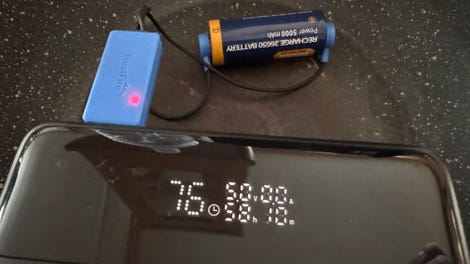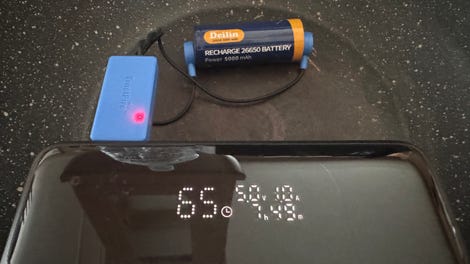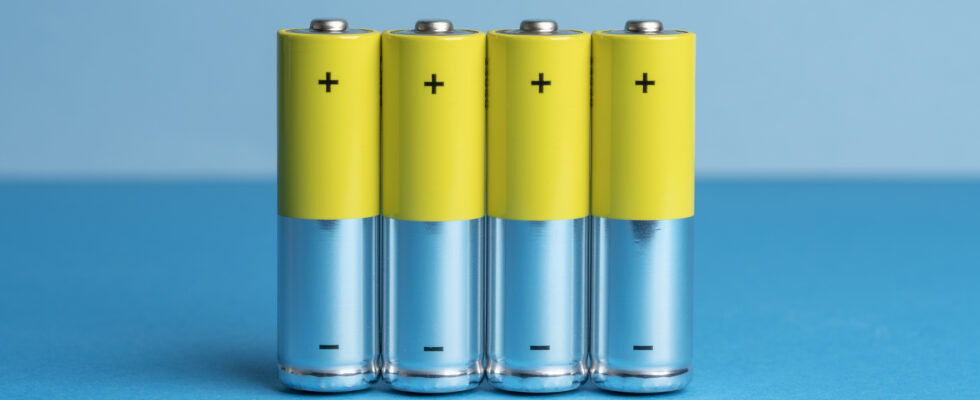More and more devices now come with rechargeable lithium-ion batteries (you know, the ones that look like the AA or C batteries of yesteryear, but are a slightly different size). The most common size these days is the 18650 battery, but there are many other sizes, such as 14500, 16340, and 26650.
These rechargeable batteries are incredibly safe if treated correctly, especially considering the amount of energy they contain. They can last for many years and hundreds of discharge cycles before needing replacement.
Despite their reliability, these batteries can experience problems. One of the most common problems is that they can be so drained that they refuse to recharge. Although these batteries seem dead, a little “gentle persuasion” can often bring them back to life.
Notice I said “gentle persuasion.”
Modern lithium-ion batteries contain an incredible amount of power, and if this power is released in an unexpected way, for example by damaging the battery or short-circuiting it, it can cause explosions, fires, injuries… or even death.
A simple USB charger
Despite these real risks, I’ve come across countless videos and blog posts that encourage people to do absurdly dangerous and unspeakable things with lithium batteries. There is only one way I recommend to revive these types of batteries: using a basic USB charger.
There are several chargers of this type. I particularly like the TrustFire UC10, but it’s now harder to find. I found that it also worked with basic USB chargers. These “dumb” chargers outperform smart chargers because they allow the battery to draw tiny amounts of current, slowly and safely, until it reaches the point where it can take a decent charge.
I like these USB chargers because I can use them by plugging them into a power bank instead of a mains charger to charge the battery, which allows me to charge in a safe place, such as outside or in an outbuilding.
As an extra precaution, I also place the battery being charged in a fireproof container (here I use an old wok), just in case something goes wrong.
be patient
Just this morning, I revived a friend’s flashlight whose charge was too low. I plugged the charger into a power bank, then connected the battery and waited. At first, I had the impression that nothing was happening (the meter on my power bank showed no consumption), but I waited anyway.

This battery doesn’t seem to charge, but it does, just very, very slowly. Adrian Kingsley-Hughes/ZDNET
And I waited. Expected…
I patiently let the battery draw small amounts of power. After about twenty minutes, it showed some sign of life and started drawing everything the charger could offer it: 1 amp at 5 volts.

And all of a sudden the battery starts drawing 1 amp and 5 volts. Adrian Kingsley-Hughes/ZDNET
At this point, I knew she had been revived and was on the road to recovery.
Throughout the process, I monitored the battery temperature using a thermal camera.

I monitor the battery temperature using a thermal camera. Adrian Kingsley-Hughes/ZDNET
I gave the battery a few more hours of charge and at the end of the process it was as good as new, saving the owner what replacing the battery would have cost.
About these battery sizes
For all practical purposes, be aware that the names of these batteries (such as 18650 and 26650) represent the dimensions of the stack.
Take the 18650 as an example. In this case, the 18 refers to the diameter of the battery in millimeters (18mm), while the other numbers represent the length (65.0mm).
If you are tempted to measure these batteries, be careful, don’t make the same mistake as someone I once saw make: using an all-metal caliper! You would instantly and dangerously short-circuit the battery! Instead, use a model with plastic-covered tips.
Source: “ZDNet.com”
